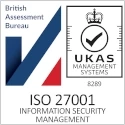15
+
YEARS OF
EXPERIENCE
1000
+
SUCCESSFUL
Projects
80
+
Satisfied
Clients

As organizations increasingly adopt cloud technologies, the installation of cloud-managed networking and security solutions is becoming a critical part of their IT infrastructure. Cisco and Meraki, two prominent players in the networking and security space, offer robust, scalable, and secure solutions designed to simplify the management of complex networks. However, the installation process for these solutions requires careful planning and execution to ensure that the setup aligns with the organization’s goals, security needs, and operational requirements.
Understanding the Cisco and Meraki Installation Process
Both Cisco and Meraki offer cloud-managed networking solutions, but the installation process differs based on the complexity of the infrastructure, the specific products being used, and the size of the organization. The installation process for Cisco’s enterprise-grade solutions may require more technical expertise, while Meraki’s solutions are typically simpler to set up, thanks to their user-friendly, cloud-based management interface. Regardless of the solution, proper installation is key to ensuring security, performance, and scalability for the network.





Key Steps in the Installation of Cisco and Meraki Solutions
The installation process for Cisco and Meraki solutions involves several stages, starting with pre-installation planning and moving through the configuration, testing, and final deployment phases. Each step is essential to ensure that the solutions are properly integrated into the organization’s infrastructure, delivering the desired outcomes in terms of performance, security, and scalability.
1. Pre-Installation Planning
Before any physical installation occurs, it’s critical to conduct thorough pre-installation planning. This phase involves assessing the organization’s existing network and identifying the specific needs that the Cisco or Meraki solution will address. Whether you are deploying Meraki’s cloud-managed network solutions or Cisco’s enterprise-level SecureX security platform, understanding your organization’s infrastructure, security requirements, and business goals is essential to designing an effective installation plan.
During this phase, businesses should evaluate factors such as the network’s geographic distribution, current security vulnerabilities, and bandwidth requirements. Additionally, this stage may include inventorying existing hardware, software, and network components to ensure compatibility with the new Cisco or Meraki solution. Proper planning also helps anticipate potential integration challenges, such as connecting the new system to legacy devices or ensuring interoperability with third-party security tools.
2. Hardware Setup and Installation
Once the planning phase is complete, the next step is the hardware setup and installation. For Cisco solutions, this could involve the installation of network devices like routers, switches, firewalls, and access points, as well as configuring the associated hardware for cloud management. Cisco devices are typically installed on-premises, with the network hardware being physically connected to the organization’s existing infrastructure. Meraki, on the other hand, focuses on cloud-managed devices, such as Meraki MX security appliances and Meraki MR wireless access points, which are also connected to the cloud via a centralized web-based dashboard.
The physical installation process generally involves connecting the network devices to the power supply and the network. For Meraki, devices are often deployed using simple plug-and-play methods, which means devices will automatically register with the Meraki cloud when connected. Cisco devices, particularly those designed for larger enterprise networks, may require more in-depth configuration to integrate them properly into existing setups, especially for advanced features like VPNs, secure access, and traffic management.
3. Network Configuration and Security Settings
After the hardware is physically set up, the next step is configuring the network and security settings. Cisco and Meraki solutions both feature powerful management tools that allow for granular control over network configurations, security policies, and traffic flows.
For Meraki, the cloud-based dashboard simplifies this step significantly, as it allows administrators to configure network settings and security policies remotely. Administrators can set up Wi-Fi networks, configure firewall rules, manage user access, and enforce security protocols without the need for on-site hardware configuration. Meraki’s intuitive interface makes it easy for businesses to define network policies, segment networks, and apply security configurations.
For Cisco solutions, configuration is typically done through tools like the Cisco Identity Services Engine (ISE) or the Cisco DNA Center, which offer enterprise-level capabilities for network management. These tools allow administrators to configure more advanced features such as Quality of Service (QoS), VPN tunnels, and network segmentation. Because of Cisco’s wide range of products and configurations, this step may require more expertise, and businesses may need specialized training or support to fully leverage Cisco’s advanced configuration options.
In both cases, security settings are a priority during this stage. Businesses should configure firewalls, virtual private networks (VPNs), and access control policies to ensure the network is protected from cyber threats. Both Cisco and Meraki offer robust security features, such as intrusion prevention, advanced malware protection, and DNS security, which should be properly configured during installation to provide a comprehensive security layer for the network.
4. Integration with Existing Systems
Once the network and security configurations are in place, the next step in the installation process is ensuring that the Cisco or Meraki solution integrates properly with existing systems. Integration typically involves connecting the new networking solution to other business applications, cloud platforms, and third-party security tools. This step is particularly important for organizations with hybrid or multi-cloud environments, as Cisco and Meraki solutions must work seamlessly with other cloud platforms and on-premises hardware.
For Cisco, this often means integrating networking devices with other Cisco products, such as Cisco Umbrella for cloud security or Cisco SecureX for advanced threat protection. For Meraki, the integration process involves linking the Meraki cloud dashboard with other cloud-based platforms or applications, such as Azure Active Directory for identity management or Google Cloud for application hosting.
Integration also requires verifying that devices are functioning correctly and that traffic is being routed according to the newly established policies. Network monitoring tools should be enabled to ensure that all devices are operational and secure.
5. Testing and Optimization
After installation and configuration, it’s time to test the network and ensure that all components are functioning as expected. This phase involves testing network performance, verifying security protocols, and ensuring that devices are properly connected to the cloud management platform. Testing can include checking for network latency, ensuring Wi-Fi coverage is optimal, and validating that the VPNs are functioning correctly.
For Meraki solutions, testing is simplified due to the cloud dashboard’s real-time monitoring capabilities, which allow administrators to see device status, traffic patterns, and security events. Cisco’s advanced monitoring tools, such as Cisco Stealthwatch or Cisco Meraki Insight, provide deeper visibility into network traffic and performance, allowing administrators to identify potential bottlenecks or security vulnerabilities.
Optimization is also a key part of this stage. Based on testing results, adjustments to network configurations or security settings may be necessary to improve performance or resolve issues. This phase ensures that the system is fully operational and secure before it is deployed across the entire organization.
6. Ongoing Support and Maintenance
Once the installation and optimization process is complete, businesses must establish an ongoing support and maintenance plan to ensure that the network remains secure and performs optimally. Cisco and Meraki both offer support contracts, including 24/7 access to customer support, software updates, and hardware replacements.
Additionally, businesses should regularly monitor network performance, security events, and device status. Both Cisco and Meraki offer cloud-based management platforms that provide continuous visibility into the health of the network, making it easier for IT teams to address issues proactively.
Cisco and Meraki
Comprehensive Cisco and Meraki solutions offering scalable networking, security, and cloud-managed systems for businesses of all sizes.Procurement
Streamlined procurement services to source high-quality products, ensuring cost efficiency and timely delivery for your business.Management
Comprehensive management services to oversee and optimize your operations, ensuring efficiency, security, and continuous improvement.
The installation of Cisco and Meraki solutions is a vital process that ensures organizations can leverage these powerful cloud-managed networking and security tools effectively. From pre-installation planning and hardware setup to configuration, integration, testing, and ongoing support, each phase plays a crucial role in ensuring the network is secure, scalable, and optimized for performance.
Conclusion
While Meraki offers a simpler, more user-friendly installation process, especially for smaller organizations, Cisco provides highly customizable and enterprise-grade solutions suited for larger, more complex infrastructures. Regardless of the solution chosen, careful planning and execution are essential to ensuring that the installation meets both the organization’s current needs and future growth. By following a structured installation process, businesses can confidently deploy Cisco or Meraki solutions and take full advantage of their cloud-managed networking capabilities.

answer time
satisfaction
score
on initial call
same business
day









